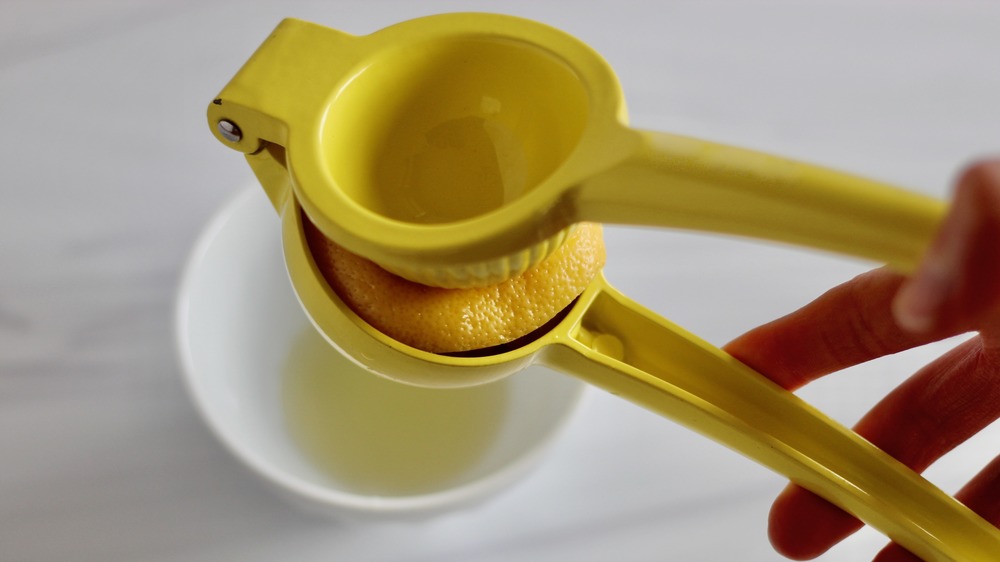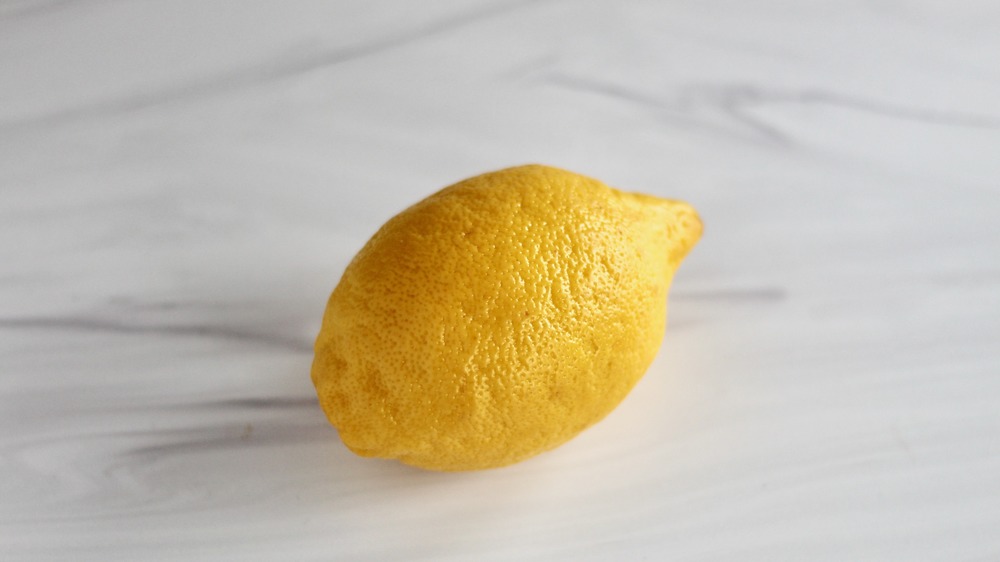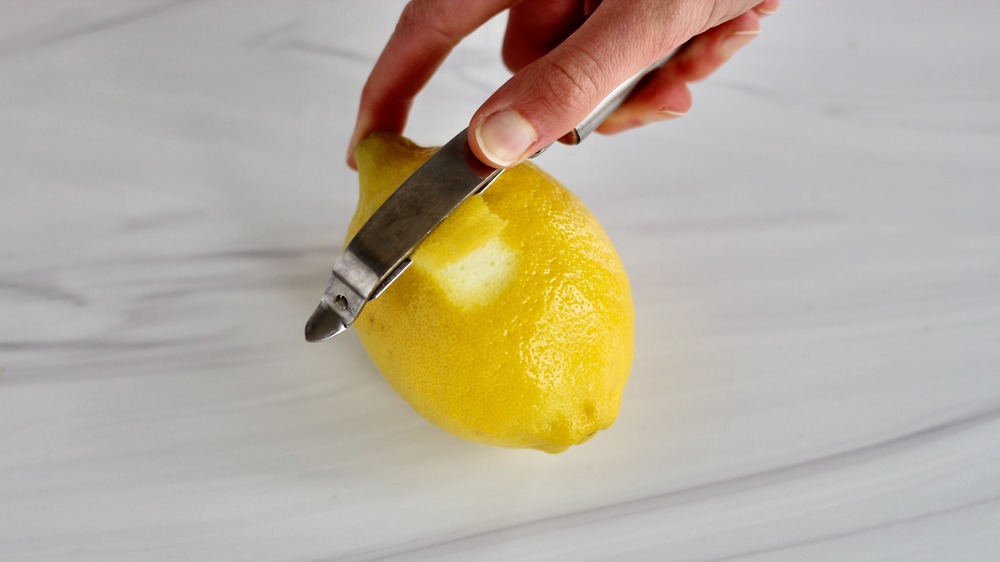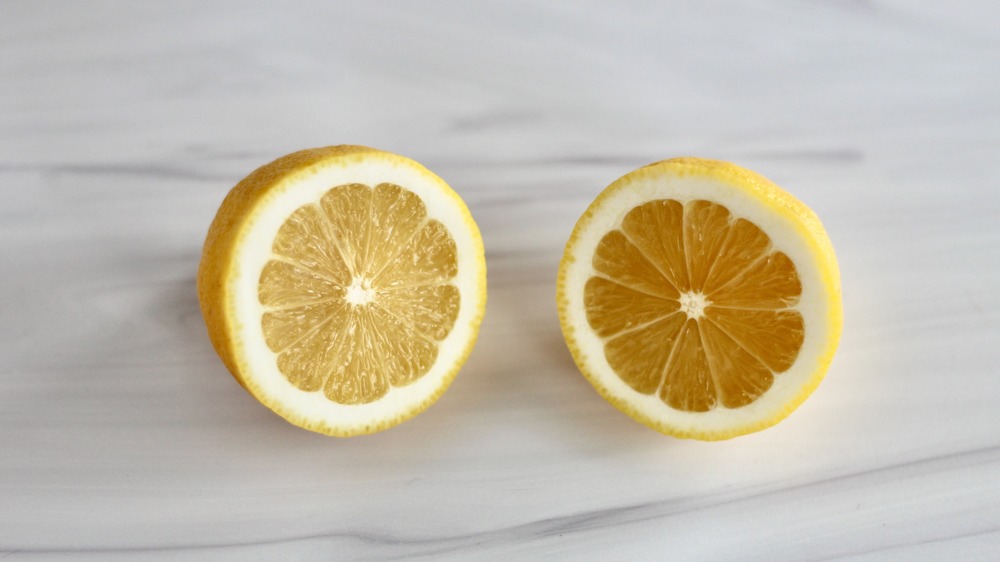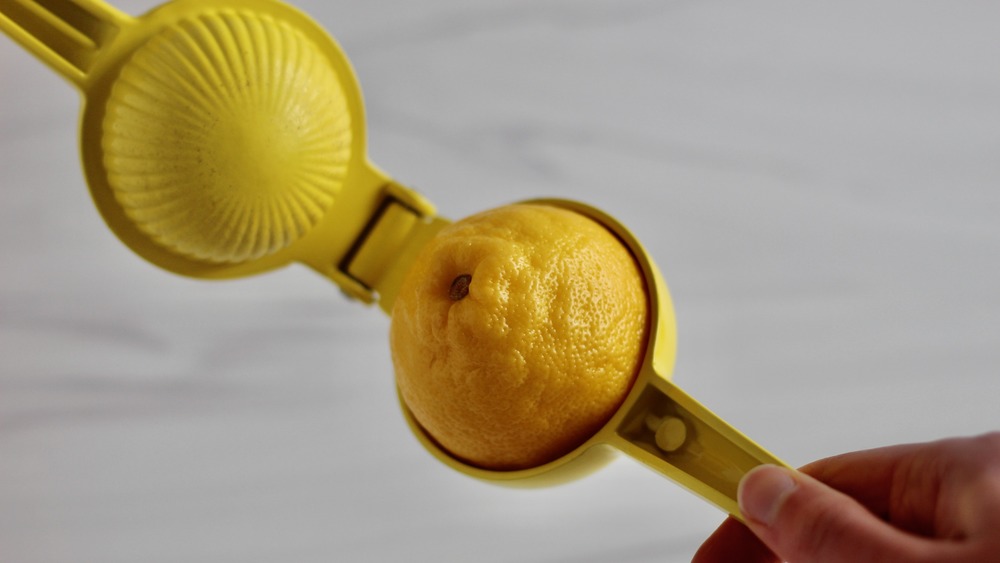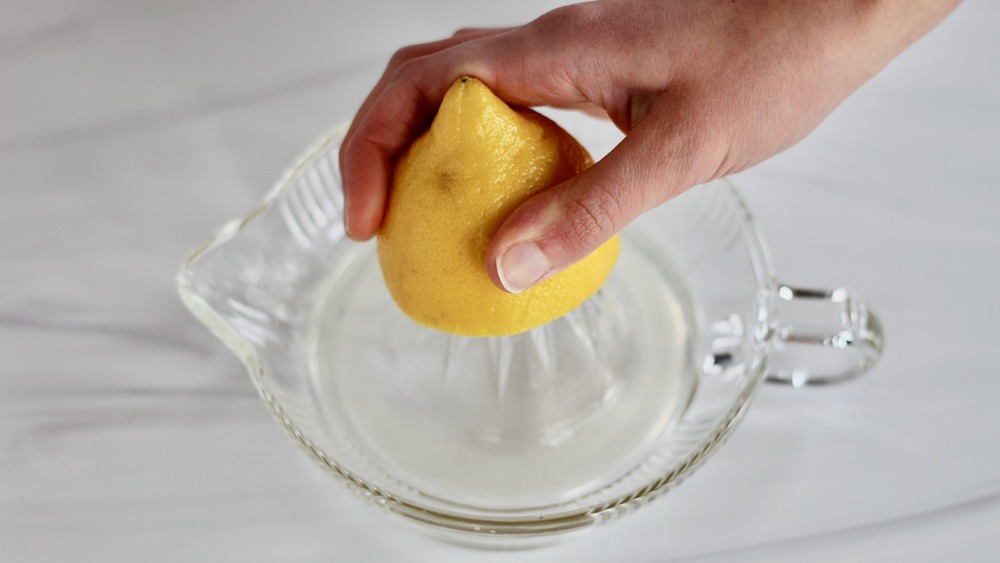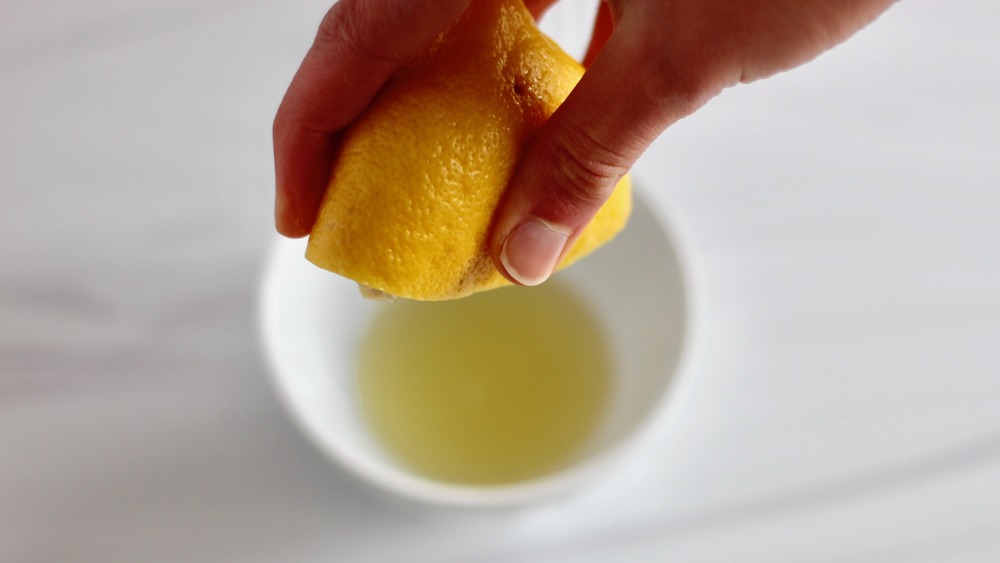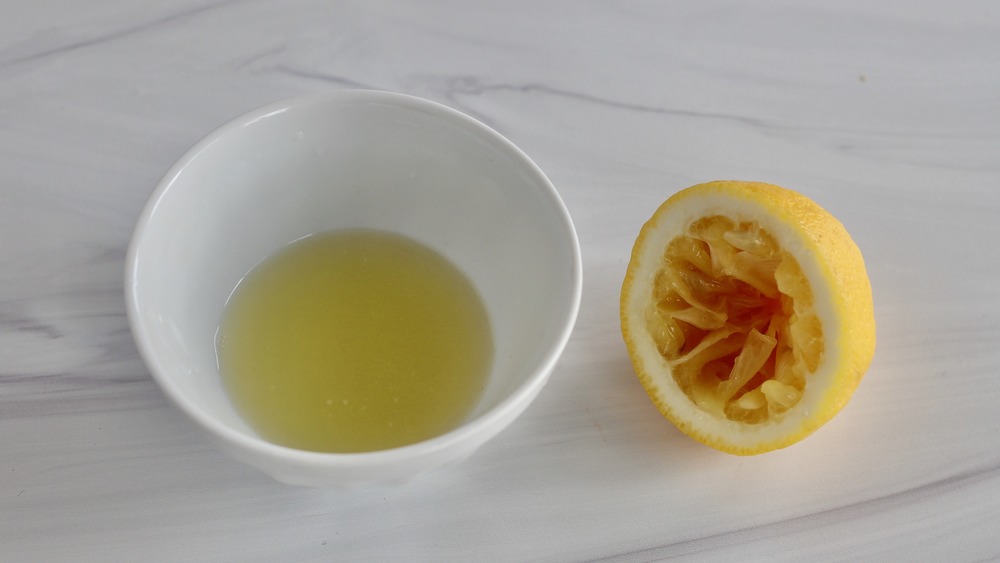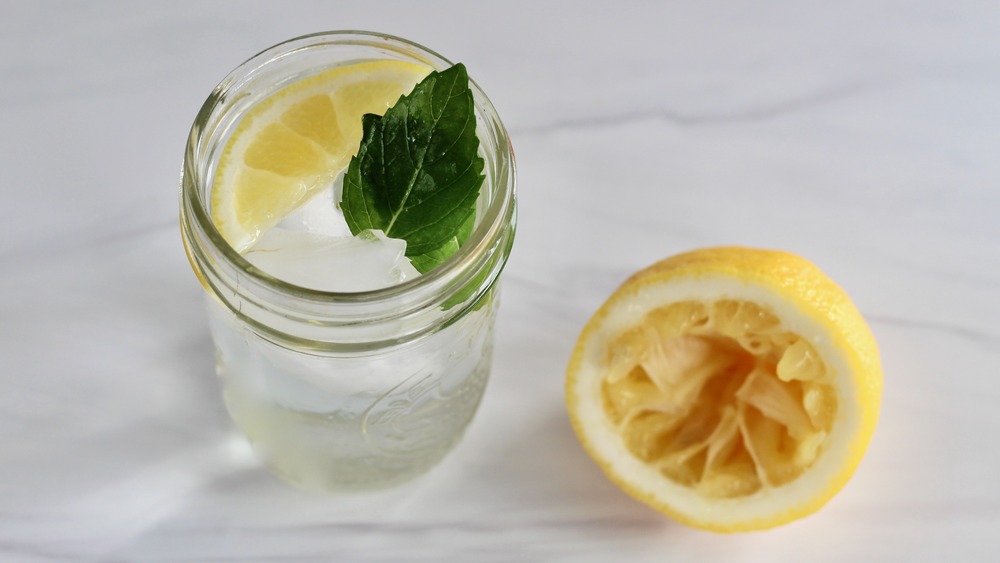How To Juice A Lemon
Lemon juice is an important ingredient used in all kinds of different recipes. It helps enhance the flavor of fish, provides the perfect pucker to a cocktail, and brings bright flavor to baked goods.
Lemon juice is a highly acidic fruit. Similar to salt, this acidity increases salivation and allows our taste buds to receive more flavor. It can also have a tenderizing or softening effect on proteins like meat and seafood. For example, you can make a marinade consisting of olive oil, lemon juice, garlic, onion, and black pepper to help tenderize a tough cut of steak. It'll make the meat taste great, too.
Knowing how to juice a lemon is simple but important. We'll show you three different ways to juice a lemon and how to use lemon zest. Check out other healthy cooking tips and recipes by registered dietitian nutritionist Mackenzie Burgess on her blog at Cheerful Choices.
Pick out your lemon
When purchasing lemons, look for ones that are bright yellow in color and free of any bruising or blemishes. Lemons come in both small and large sizes. A small lemon will yield about three tablespoons of juice. A large lemon will yield about five tablespoons of juice. That means to make a cup of freshly squeezed lemon juice, you will need about five small lemons or three large lemons.
Peel or zest if desired
The outermost layer of the lemon rind is referred to as the zest. It contains natural oils that add major flavor to food when you're cooking. If you have a few extra minutes before juicing, take the time to peel or grate the zest.
This zest can be used for various recipes, garnishing drinks, or infusing oils. If you have extra zest, you can always freeze it to save for later. Frozen lemon zest will last for up to three months. There are other great reasons why you should save leftover lemon peel.
Cut the lemon in half
Whatever method you choose for juicing, you'll start by cutting the lemon in half crosswise.
Use a handheld squeezer
Using a handheld squeezer is a great way to extract juice without getting any seeds in the mix.
Place the lemon half with the flesh down and the skin facing up. Positioning the lemon this way will help get the maximum amount of juice out. Once the lemon half is placed inside the squeezer, use both hands to press down on the squeezer and juice the lemon over a bowl.
Use a glass citrus juicer
Glass citrus juicers are great for all kinds of citrus, including lemons. Place the lemon half around the pointed portion of the juicer and press down with gentle pressure. This will extract all the juice from the lemon with ease. If any seeds escape, use a small spoon to scoop them out and discard them. While lemon seeds are not harmful, they are quite bitter and are not typically used in cooking.
Squeeze by hand
If you don't have any fancy tools, that's not a problem. You can always squeeze the lemon by hand. Using one or both hands, squeeze the lemon half with gentle pressure over a bowl. Again, if any seeds escape, use a small spoon to scoop them out and discard. You can also squeeze your lemon over a fine mesh strainer to catch any seeds that escape.
How to store lemon juice
Lemon juice can be stored in a mason jar or other airtight container for up to four days. After that, it will start to lose its flavor. You can also freeze extra lemon juice in ice cube trays to use later on.
Ways to use lemon juice
Try adding lemon juice to infused water, homemade cocktails and mocktails, light pasta dishes, or lemon-flavored desserts. It's also perfect to drizzle over apple slices or opened avocados to slow down browning.
How to juice a lemon
Knowing how to juice a lemon is simple but important. We'll show you three different ways to juice a lemon and how to use lemon zest.
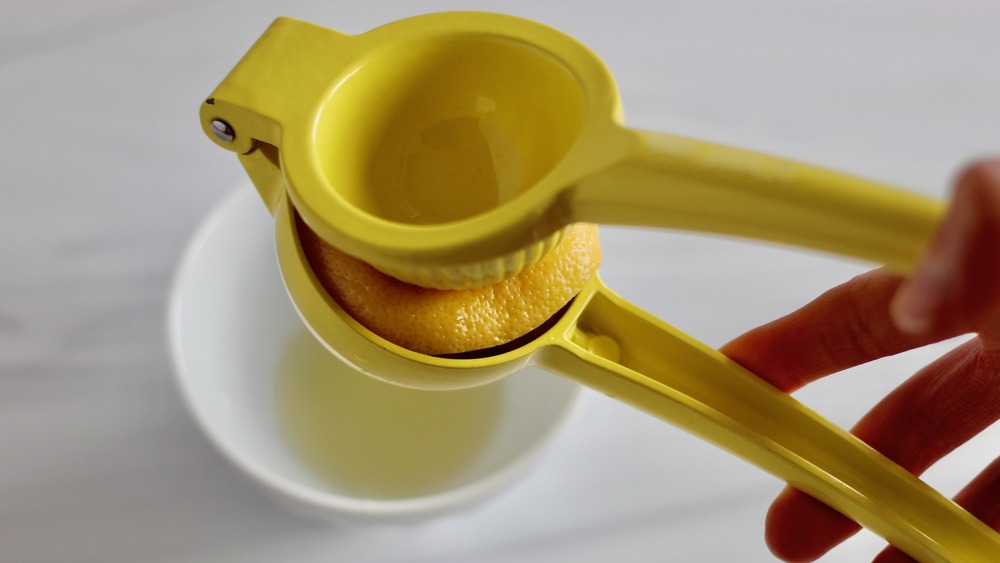
Ingredients
- 1 lemon
Optional Ingredients
- Handheld squeezer
- Citrus juicer
- Lemon
Directions
- Pick out a lemon.
- Peel or zest your lemon if desired.
- Cut lemon in half crosswise.
- Using a handheld squeezer, a citrus juicer, or your hands–squeeze lemon to juice it. Remove any seeds that slip out through the juicing process.
- Store fresh squeezed lemon juice in an airtight container in the fridge for up to 4 days.
